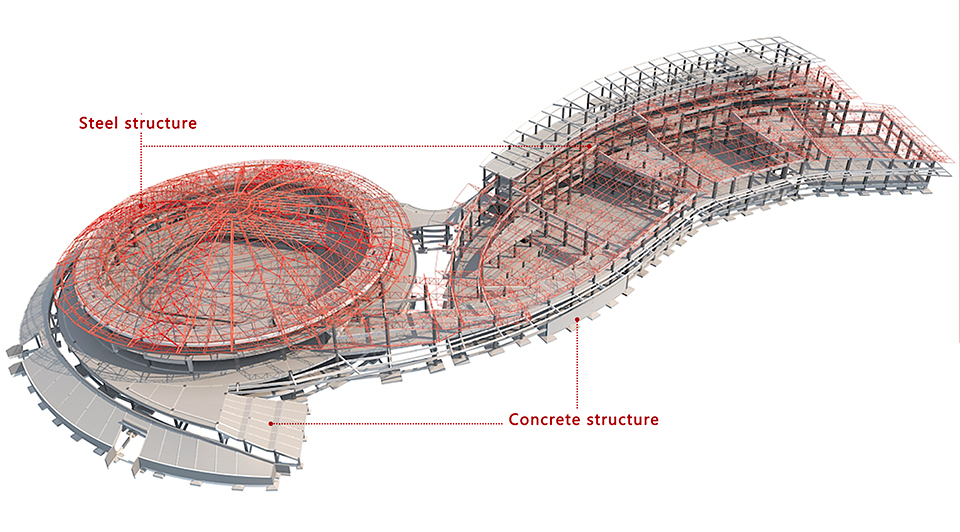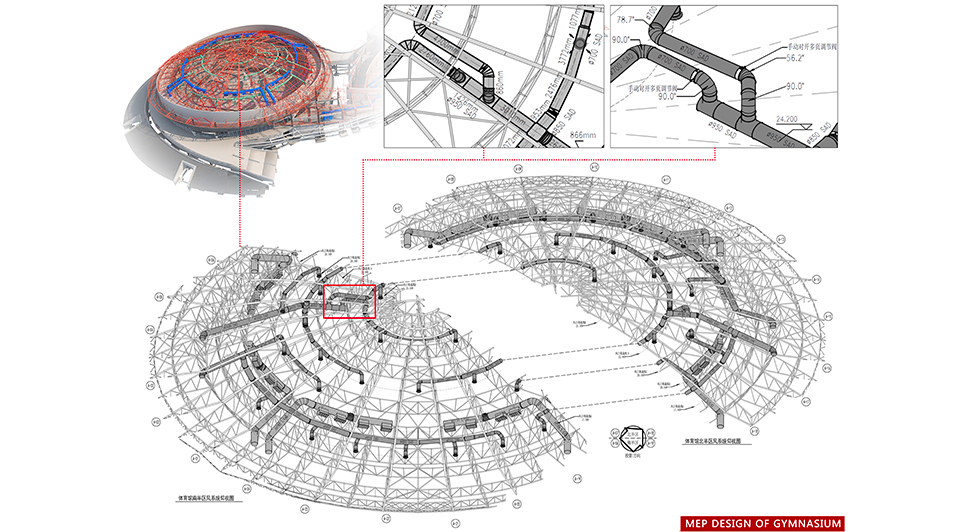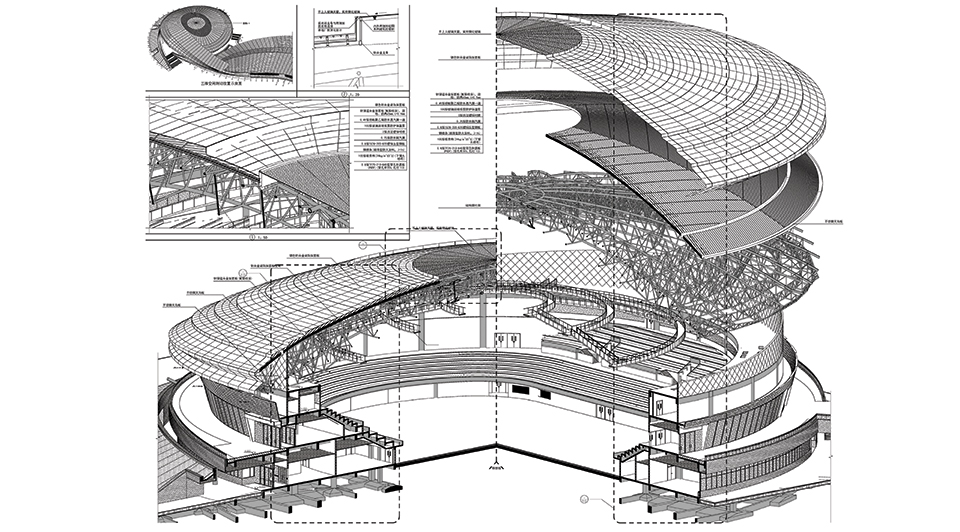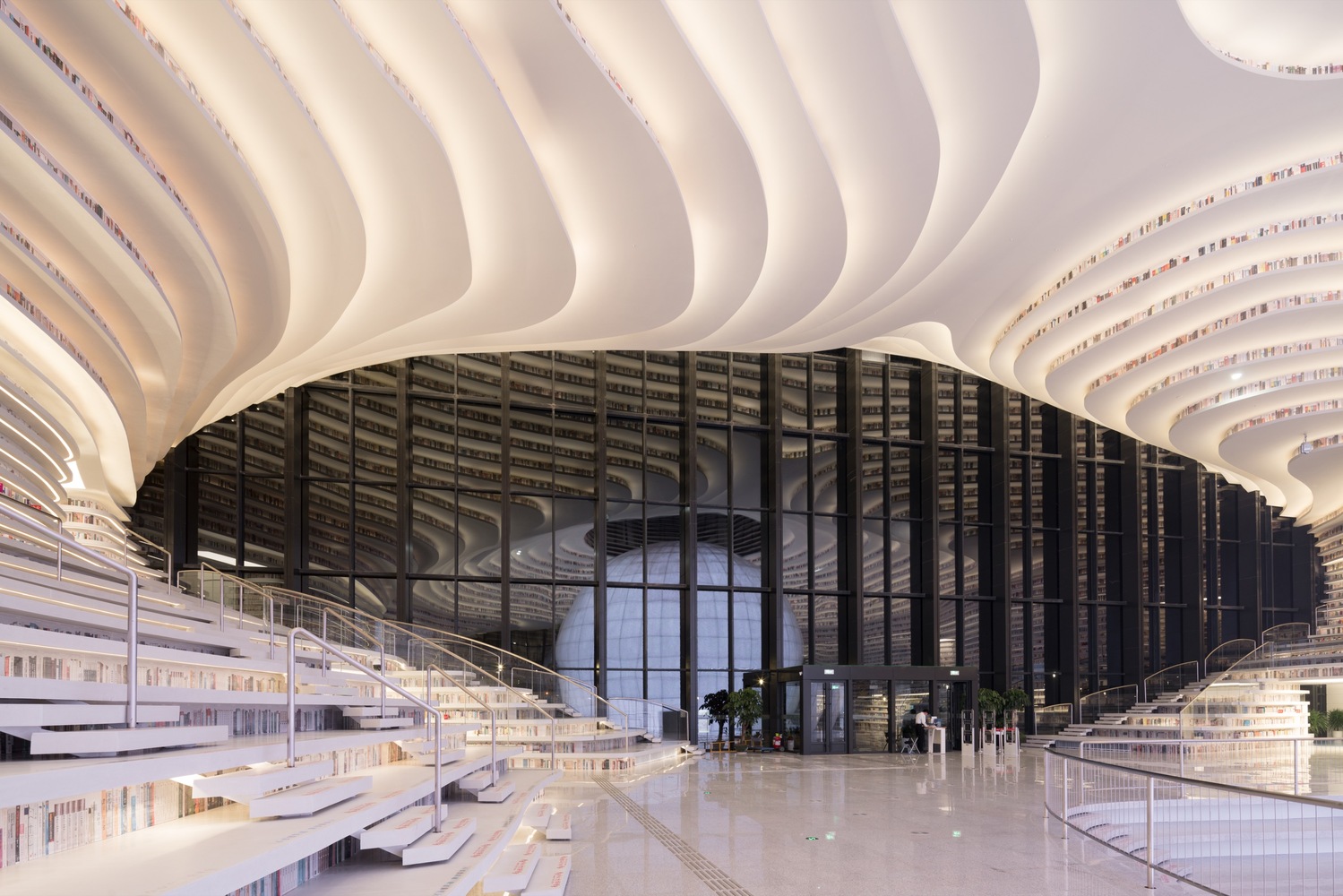Tianjin Architecture Design Institute Gets Fit With BIM
Other
Published by:
Datasheet
Description

Taking advantage of generative design
The entire project embraces BIM. Tianjin Architecture Design Institute placed a large focus on the use of generative design to orientate structural components to tightly fit the finished surface, reducing material waste. The non-linear design and optimization of the fitness center was made possible through parametric modeling.
For example, at the junction of the steel roof truss and column top, a truss support structure was generated by compiling scripts in generative design software to automatically align the angle and complete the support design below the truss node. The panel design for the roof was optimized to unify the size, reduce panel variety, and lower the cost. The generative design was also used to quickly place stadium seats and classify them for different functions. Pipes and electrical installation optimization were completed as well.

Achieving goals with BIM
A key priority for the project was to enhance collaboration within a very complex space for many different uses. This included identifying negative space to take advantage of every part of the building. By continuously improving the BIM model and working in 3D, the team achieved coordination across disciplines and reduced design errors and on-site design changes.
At the same time, this project adopts an open ceiling that highlights the structural and MEP systems while reducing costs. Computational fluid dynamics (CFD) was effectively utilized to analyze environmental simulation factors and optimize the layout. The interior CFD analysis improved HVAC selection and the layout of the sports buildings, which are sensitive to airflow.













